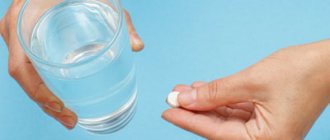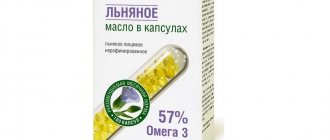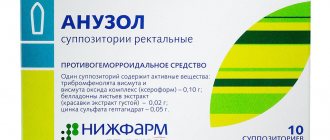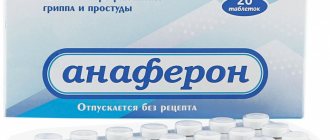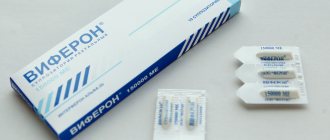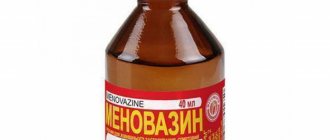Sea buckthorn oil is a unique product, just like the berry from which it is obtained. It is useful for treating acne and other skin diseases. This is one of the few oils containing essential fatty acids and many vitamins. The benefits of the product have been known to mankind for many centuries. In ancient China, Tibet and Mongolia, it was called liquid gold and was considered a medicine given by the gods. The ancient Hellenes used this oil to treat horses wounded in battle. The healing properties of sea buckthorn oil have also been known since time immemorial in Rus' and Siberia. And in the Soviet Union, this product was mandatory for cosmonauts as a means of protecting against radiation.
Composition and release forms
Sea buckthorn oil is an oily liquid of orange color with a red tint, has a pleasant aroma and characteristic taste. In pharmacies, the herbal medicine can be purchased in tinted glass bottles of 30, 50, 100 ml. The composition is represented by a mixture of carotenes and carotenoids, as well as a complex of biologically active substances.
The healing properties of sea buckthorn oil are due to its unique composition, which includes:
- unsaturated fatty acids – Omega-3, Omega-6 and Omega-9;
- saturated acids – palmitic, myristic, stearic;
- organic acids – malic, salicylic, oxalic;
- phospholipids responsible for the two-layer structure of cell membranes;
- vitamins of group B, as well as E, A, P, K;
- tannins;
- minerals and trace elements – magnesium, zinc, iron, silicon, calcium;
- flavonoids and phytosterols to support hormonal balance.
Sea buckthorn oil is available in different dosage forms:
- in liquid form for oral and topical use;
- in capsules coated with a soluble shell;
- suppositories for rectal or vaginal administration.
general characteristics
Sea buckthorn oil is obtained from sea buckthorn (the same variety that is common in our latitudes). This product comes in two types: from seeds or from berry pulp. In terms of nutritional value and chemical composition, there are some differences between different oils, but in general their beneficial properties are identical. The most noticeable difference between a product prepared in different ways is in color and aroma. The oil from the berries is usually dark red or red-orange and quite viscous. The seed product is yellow or pale orange and has a more watery consistency. But most often the sea buckthorn product from pharmacies and specialty stores is a mixture of two types of oil.
Content:
- general characteristics
- Features of the chemical composition
- Beneficial features
- Benefits of use
- Possible side effects and dosage
- Use in folk medicine
- Use in cosmetology
The product gets its golden color due to the high concentration of carotenoids. Beta-carotene, contained in ripe berries, gives them an orange color, while lycopene gives the fruit a red tint. And the combination of these two components makes sea buckthorn yellowish-red. The smell of sea buckthorn oil is described by many as the “aroma of a damp forest,” that is, it contains pronounced woody notes.
How does sea buckthorn oil work?
The healing liquid helps with various diseases and is also used for preventive purposes. Medicinal properties include:
- protection from cancer and radiation exposure;
- cleansing blood vessels, increasing their elasticity and permeability;
- restoration of damaged skin and mucous membranes;
- saturating the body with useful substances and microelements;
- improvement of metabolism;
- stimulation of immunity;
- choleretic effect;
- anti-inflammatory, analgesic, regenerating and bactericidal effects.
Pharmacodynamics and pharmacokinetics
Herbal remedy, source of vitamins K, E, A , B vitamins . Stimulates the restoration of mucous membranes and skin after damage, accelerates tissue epithelization, suppresses the activity of proteolytic enzymes of gastric juice, has anti-inflammatory , antioxidant , cytoprotective and restorative effects.
Due to the presence of fat-soluble natural bioantioxidants in its composition, the oil influences the course of free radical processes in the body and protects cell membranes from damage. Maintains blood cholesterol
What is treated with sea buckthorn oil
In medicine, sea buckthorn oil is used in different ways:
- in gastroenterology - they treat stomach ulcers, fatty liver, erosive lesions of the digestive organs, colitis and enterocolitis. The drug improves digestion and intestinal function, helps restore hepatocytes;
- in gynecology, an oil solution is used to treat diseases in the early stages: cervical erosion, colpitis, cervicitis, endometritis, prescribed for injuries to the vaginal wall;
- in surgery and dermatology, the oil is effective in treating the consequences of burns and injuries associated with a violation of the integrity of the skin. Use is advisable for frostbite, dermatitis, lichen, cuts and furunculosis, cracks and poorly healing wounds;
- in proctology, sea buckthorn suppositories and microenemas are used to treat hemorrhoids, inflammation of the intestinal mucosa, anal fissures, and proctitis;
- in ophthalmology, the oil is used internally to prevent serious vision problems - cataracts, glaucoma, and also in the form of drops in the treatment of conjunctivitis, keratitis, blepharitis, burns and other eye injuries;
- in otorhinolaryngology, sinusitis, pharyngitis, tonsillitis, laryngitis and sinusitis are treated with oil. Used as inhalation or nasal drops;
- in dentistry - with the help of oil they relieve toothache, manifestations of stomatitis, periodontal disease, gingivitis, and are prescribed for healing wounds after tooth extraction;
- in cardiology for diagnoses such as coronary artery disease and atherosclerosis to maintain cholesterol balance, increase vascular elasticity and prevent thrombosis;
- in cosmetology – to restore hair health, nourish, moisturize and increase skin elasticity.
The presence of a large amount of useful substances in the oil makes it useful for conditions associated with a lack of vitamins, during rehabilitation after illnesses or operations, and for strengthening the body's immunity.
Use in folk medicine
Sea buckthorn oil has been used in folk medicine for thousands of years. Even Tibetan doctors during the Chinese Tang Dynasty knew about the medicinal properties of this product. Sea buckthorn oil has been used in Ayurvedic medicine since at least 5000 BC. The ancient Greeks also used it to treat various health problems. In Tibet, Russia, Mongolia and China, the sea buckthorn product is known as a remedy for coughs and various types of pain; it was consumed to improve blood circulation and facilitate the digestion of food. Today this oil is known primarily for its beneficial effects on the skin. Herbalists use it to treat burns, cuts, rashes and various skin diseases. In addition, many centuries ago, women noticed that sea buckthorn oil not only treats skin diseases, but also removes wrinkles.
Recipes from traditional medicine
For stomach ulcers
Add a quarter teaspoon of sea buckthorn oil to half a glass of any juice (the fats contained in the oil increase the bioavailability of fat-soluble vitamins contained in the juice). It is useful to take this medicine no more than 2 times a day. The acute pain caused by the ulcer should go away almost immediately, and a general improvement in the condition will be noticeable after a few days of therapy. The same remedy is useful for heartburn and acid reflux, as it normalizes gastric secretion. In general, sea buckthorn oil improves the functioning of the stomach, increases appetite, and promotes food digestion.
For asthma, cough and sore throat
If you take 1/4 teaspoon of sea buckthorn oil daily, you can relieve the symptoms of asthma and bronchitis. For a sore throat, gargling with warm water and sea buckthorn oil (20 drops per glass) is helpful. And water-sea buckthorn inhalations improve coughing and relieve nasal congestion.
For wound healing
Having antiseptic properties, “liquid gold” promotes wound healing. To speed up the healing of cuts and prevent scarring, it is useful to make compresses based on honey and sea buckthorn oil.
Situations when sea buckthorn oil is contraindicated
The main contraindication is hypersensitivity to the substance. It is not recommended to use the herbal medicine internally if:
- diagnosis of cholelithiasis;
- diarrhea;
- acute inflammatory process in the liver, gall bladder, bile ducts or pancreas.
Sea buckthorn suppositories for rectal administration are not prescribed to preschool children, and vaginal suppositories are not used at all in children.
Overdose
If a large dose of the drug is ingested once, you should do a gastric lavage, take an enterosorbent , and consult a doctor.
An overdose may be accompanied by nausea, vomiting, confusion, headache, diarrhea , convulsions , skin rashes, epithelial desquamation , and oliguria . In some cases, shock conditions develop.
No cases of overdose have been reported with local or external use.
Side effects
As a rule, the oil is well tolerated. When used externally, a burning sensation may be felt if the product is applied to damaged skin.
When taken internally, there may be a feeling of bitterness in the mouth and diluting the stool.
If the patient has an individual intolerance to oil, then an allergic reaction may develop.
It is important not to exceed the recommended dosage to avoid vomiting, impaired urine output, diarrhea, and anaphylactic shock.
Possible side effects and dosage
Sea buckthorn oil is considered safe for consumption. However, it is important to ensure that it is an organic, cold-pressed product. A dosage of no more than 1/4 teaspoon of oil diluted in a base (for example, lemon juice, coconut oil or olive oil) is considered safe. But even this dose may be harmful for people with intestinal, kidney or liver diseases.
Before using sea buckthorn oil externally, you should check whether the product causes allergic reactions. To do this, you will have to apply a little product to your wrist and wait 12 hours.
When using a sea buckthorn product, the color of your urine may change. It usually becomes dark yellow or with a reddish tint, and also acquires a faint odor, reminiscent of the smell of old books. But these side effects are harmless and disappear after stopping the oil. Also, regular application of the product to the skin may cause temporary yellowing of the skin.
How to use sea buckthorn oil
Methods of using the medicine are varied and depend on the chosen form of release and indications:
- when used topically, soak a gauze bandage with the liquid, which is applied to the damaged fragment of the skin, previously cleaned;
- to improve immunity, take two to three tablespoons before meals;
- for diseases of the ENT organs, the oil solution is used for inhalation or the pharynx and tonsils are lubricated with it for 7-10 days;
- gum disease is treated with applications of the solution, which are kept on the affected area for about 15 minutes;
- The oil is taken in capsules for stomach diseases: 6-8 capsules two to three times a day 15-20 minutes before meals and before bedtime;
- in gynecology, oil suppositories are used, one suppository twice a day for 7-10 days, or tampons soaked in oil;
- for hemorrhoids, the product is used for enemas or in the form of rectal suppositories, which are inserted into the rectum twice a day for 10-14 days;
- In cosmetology, oil is added to care products for hair, nails, and face.
Analogs
Level 4 ATC code matches:
Psorinohel N
Lanolin
Badyaga Forte
Badyaga
Rogaine
Capsiol
Vulnuzan
Friederm Zinc
Friderm Tar
Friederm pH balance
Propolis tincture
Skin cap
Dufilm
Aekol
Petrolatum
Collomak
Generolon
Alerana
Apilak
Protopik
Actinogial , Algisorb , Acizol , Bacteriophage typhoid , Braydan , Vokatsit , Deltaran , Desferal , Zorex , Ingafitol , Carmolis , Longidaza , Piobacteriophage .

